TWIST Water Filter System

Undersink System for urban homes
Lead
Chemicals (VOC, THM)
Cysts (Cryptosporidium, Giardia)
Chlorine, taste and odour
Sediment
- Easy cartridge change technology
- Includes chrome faucet
- Certified to CSA and NSF standards
- Made in Canada
- BPA-free materials
-
Click to buy online or in store at:
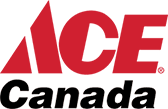



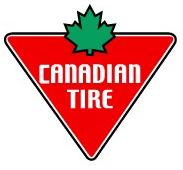











Also available in store at the following retailers:
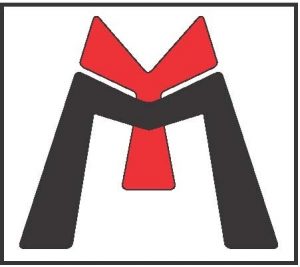

Not all models are available at all locations/retailers. If you questions regarding availability of a particular model, please call your local store or Rainfresh support.
-
Clean, pure water at a fraction of the cost of bottled water!
Rainfresh TWIST system is an advanced drinking water system specifically designed for the urban home. This powerhouse water filter system delivers clean, pure water for the whole family by reducing lead , chemicals (pesticides, herbicides, insecticides, THMs , VOC , Benzene, chlorine , etc), and parasitic cysts . All the performance at a fraction of the cost of bottled water.
Installed under the kitchen sink, the TWIST system features a stylish chrome faucet through which filtered water is dispensed. Filter cartridge changes are extremely easy – just grab, twist and remove!
Rainfresh TWIST is a top rated water filter and offers exceptional value through top performance and economy. It’s made in Canada and a must have for every urban home!
PERFORMANCE
Reduces
- lead
- Volatile Organic Compounds (VOC) – over 50 chemicals including pesticides, herbicides, insecticides, benzene, Trihalomethanes, chloroform etc
- parasitic cysts (Cryptosporidium & Giardia)
- chlorine, taste and odour
- sediment
BENEFITS
- All you need for drinking water needs of your urban home
- Exceptional performance gives you the confidence that you are getting clean, safe, pure drinking water
- Does not remove healthful minerals
- Extremely easy filter cartridge changes to maintain the quality of your water – just hold, twist and remove – no need to turn water off – NO SPILL, NO MESS
FEATURES
- Compact design that easily goes on the cabinet wall undersink without coming in the way of your storage
- lead and BPA-free materials
- Easy cartridge change design – hold, twist and remove – no need to turn water off – NO SPILL, NO MESS
- Contemporary ceramic-disc chrome faucet,
- Cartridge replacement monitor (model QS1 & QS1K only) – lights up when the life of the filter cartridge is over
INSTALLATION
- Installs easily under kitchen or other convenient location in 45-60 minutes average.
- All fittings included to attach system under sink to ½” copper or PEX pipe.
- Requires a 1/2” hole in the counter-top for the faucet or can use existing sprayer hole
- Can be installed in the basement with tube running to faucet. Unit must not be more than 15 feet away
REPLACEMENT CARTRIDGE
- Replacement cartridge model QLV
- Cartridge life = 250 US gal/946 L or 4 months for model QS1X
- Cartridge life = 350 US gal/1324L or 6 months for models QS1 & QS1K
- Available at most retail stores. Click on the “where to buy” tab for a list of retailers
TESTING & CERTIFICATION
- Tested and certified by CSA International to CSA B483.1; to NSF/ANSI Standard 53 for reduction of VOC, lead and cyst; to Standard 42 for reduction of chlorine, taste and odour; and to NSF/ANSI 372 for low lead requirements
WARRANTY
- 1 year limited warranty
WHAT’S INCLUDED
Includes TWIST filter system, chrome faucet, cartridge, all fittings, tubing and easy-to-follow instructions for do-it-yourself installation on copper pipe.
-
Download brochure (PDF):
- TWIST QS1/QS1X Brochure English
- TWIST QS1/QS1X Brochure Français
Download Performance Data Sheet (PDF):
Download Product Manual (PDF):
- QS1/QS1X Manual English & Français
-
Have more questions? Enter you own question below and our customer service will get back to you within 24 hours.
-
Click below to buy parts for Rainfresh TWIST system directly from Rainfresh online store.
-
The best Home water filter system Canada!
Clean, pure water at a fraction of the cost of bottled water!
Rainfresh TWIST system is an advanced drinking water system specifically designed for the urban home. This powerhouse home water filter system Canada delivers clean, pure water for the whole family by reducing lead , chemicals (pesticides, herbicides, insecticides, THMs , VOC , Benzene, chlorine , etc), and parasitic cysts . All the performance at a fraction of the cost of bottled water.
Installed under the kitchen sink, the TWIST system features a stylish chrome faucet through which filtered water is dispensed. Filter cartridge changes are extremely easy – just grab, twist and remove!
Rainfresh TWIST is a top rated home water filter system Canada and offers exceptional value through top performance and economy. It’s made in Canada and a must have for every urban home!
PERFORMANCE
Reduces
- lead
- Volatile Organic Compounds (VOC) – over 50 chemicals including pesticides, herbicides, insecticides, benzene, Trihalomethanes, chloroform etc
- parasitic cysts (Cryptosporidium & Giardia)
- chlorine, taste and odour
- sediment
BENEFITS
- All you need for drinking water needs of your urban home
- Exceptional performance gives you the confidence that you are getting clean, safe, pure drinking water
- Does not remove healthful minerals
- Extremely easy filter cartridge changes to maintain the quality of your water – just hold, twist and remove – no need to turn water off – NO SPILL, NO MESS
FEATURES
- Compact design that easily goes on the cabinet wall undersink without coming in the way of your storage
- lead and BPA-free materials
- Easy cartridge change design – hold, twist and remove – no need to turn water off – NO SPILL, NO MESS
- Contemporary ceramic-disc chrome faucet,
- Cartridge replacement monitor (model QS1 & QS1K only) – lights up when the life of the filter cartridge is over
INSTALLATION
- Installs easily under kitchen or other convenient location in 45-60 minutes average.
- All fittings included to attach system under sink to ½” copper or PEX pipe.
- Requires a 1/2” hole in the counter-top for the faucet or can use existing sprayer hole
- Can be installed in the basement with tube running to faucet. Unit must not be more than 15 feet away
REPLACEMENT CARTRIDGE
- Replacement cartridge model QLV
- Cartridge life = 250 US gal/946 L or 4 months for model QS1X
- Cartridge life = 350 US gal/1324L or 6 months for models QS1 & QS1K
- Available at most retail stores. Click on the “where to buy” tab for a list of retailers
TESTING & CERTIFICATION
- QS1 Home Water Filter System Canada is tested and certified by CSA International to CSA B483.1; to NSF/ANSI Standard 53 for reduction of VOC, lead and cyst; to Standard 42 for reduction of chlorine, taste and odour; and to NSF/ANSI 372 for low lead requirements
WARRANTY
- 1 year limited warranty
WHAT’S INCLUDED
Home water filter system Canada includes, chrome faucet, cartridge, all fittings, tubing and easy-to-follow instructions for do-it-yourself installation on copper pipe. Additional connector kit required to attach to PEX pipe
-
Reviews
Add a review Cancel reply



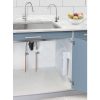
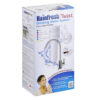
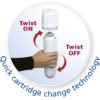
Fantastic product. The Twist cartridge-change feature is cool, even my daughter can change cartridges. It is easy to install, water tastes great and we love the faucet. The monitor feature is great but couldve been better with a audible alarm as well. It performs better than 2 and 3 stage competitive products that even cost more. Its compact and goodbye bottled water…hello environment ! PROS TWIST cartridge change feature Cartridge-change monitor Faucet Price MADE IN CANADA I’d recommend it to everyone!
Customer from Toronto, May 5, 2009
Even though the tap water is of good quality, the filtered water tastes much better. The installation took me a couple of hours, because I have decided to drill a hole in the stainless steel sink (make a spray hole), instead of drilling the countertop. Although it is not recommended to install the saddle valve on PEX pipe, I took a chance and it worked. However, I took precaution to install the valve close to the brass T-connector and did not overtighten the bolts. The only problem with the unit I have noticed is that compression nuts are not threaded enough, so they need to be tighten strong to make leak-free connections.
Customer from Montreal, Quebec on Mar 29, 2010
Purchased this item a year and a half ago. The last couple of times I changed the filter it wouldn’t “lock” into position. It started to make a banging noise when I turned on the faucet. I e-mailed Rainfresh and they gladly sent me a replacement head unit which fixed the problem. You can buy this item with confidence that Rain Fresh will stand behind it.
Customer from Barrie, Ontario on Feb 8, 2011
My wife and I installed this just because we were worried about the lead property pipe that brings water into our house. The city tested our water, and the lead result was very low, but we wanted to be sure. Lead does serious damage to fetuses and children, google it. The Brita device at the tap does the same job but we didn’t want something hanging from the faucet. The Rainfresh Twist took us 45 minutes to install. No drip, no mess, no problem. The clamp and pierce device is genius. After it was installed we could immediately taste the difference in the water. BTW, the Brita in the fridge doesn’t filter lead and took up too much room. Bye Bye.
Customer from Toronto on Feb 13, 2011
Great value for what you get and the filters are a good value for 6 months of filtering. Would be 5 stars, as the install would have been easy and quick, IF parts weren’t missing from 2 separate boxes.
Customer on Jan 30, 2016
To keep the story short, it now works wonderfully.
It fills up my water bottle quickly, my kids sippy cup in seconds, and the resevoir for my coffee maker in half a minute.
Setup was very straightforward, you don’t need much experience to do it, but you do need to follow the instructions. You also need a few basic tools, like a drill, and a small adjustable wrench that can handle roughly a 1/2″ nut.
My reason to take the time to write this review is I had an issue after the installation. The people at Rainfresh spent a lot of time on the phone with me troubleshooting, and when the answer was replacing a part, they had it shipped to me in 2 business days. That is standing behind your product!
Mathew from Toronto on Jan 21, 2013
The Product is working very nicely for our needs. The customer service we received was excellent and prompt!
We were unsure of some details and had misplaced our manual so I sent in an email with questions. the email was replied to instantly and all questions responded to with great satisfaction. Thank you – Excellent customer service.
Great product that made our drinking water not only taste better but also be safer for our family. Love being able to cook with filtered water now (did not have the patience to do that with Brita filter) and rinse baby bottles with clean water.
Was very easy to install and filters are easy to change.
Only – is the durability of the faucet. It started leaking and now drips quite fast. When I called customer service they tell me to buy now faucet for 40$. I expected the product to last longer. Not very envrionment friendly if you need to change the faucet every 2 years.
Hi I recently installed the rainfresh twist under my sink and for some strange reason the drinking tube one month later has black spots in it wondering where this comes from the filter is new and no matter how many times I change it a month later spots show up what could be the cause of this
Hi Wesley, Thank you for your comment. Please call Rainfresh technical support so we can better understand the cause of the black spots. It could be Manganese or carbon spots but pictures and a call with our specialists should help.
We purchased the Rainfresh Mega8UV system through another company only to find that someone had cannibalized it for parts. That company did next to nothing to help us, but the customer service at Rainfresh when contacted immediately looked into it and resolved our problem. I was really impressed with the service and was happy to find true customer service alive and flourishing in this company. Many thanks I will be purchasing future replacement filters etc directly from Rainfresh.
Excellent customer support
Excellent customer support. Excellent Canadian company